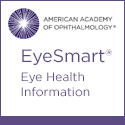What is a cataract?
A cataract is a clouding of the normally clear lens of the eye. It can be compared to a window that is frosted or yellowed. The amount and pattern of cloudiness within the lens can vary. If the cloudiness is not near the center of the lens, you may not be aware that a cataract is present. There are many misconceptions about cataracts.
A cataract is not:
- A film over the eye
- Caused by overusing the eyes
- Spread from one eye to the other
- A cause of irreversible blindness
Common symptoms of cataracts include:
- A painless blurring of vision
- Glare, or light sensitivity
- Poor night vision
- Double vision in one eye
- Needing brighter light to read
- Fading or yellowing of colors
What causes cataracts?
The most common type of cataract is related to aging of the eye.
Causes of cataracts include:
- Family history
- Medical problems, such as diabetes
- Injury to the eye
- Medications, especially steroids
- Long-term, unprotected exposure to sunlight
- Previous eye surgery
- Unknown factors
How is a cataract detected?
By performing a thorough eye examination, our ophthalmologist can detect the presence of a cataract.
A careful evaluation will also rule out any other conditions that may be causing blurred vision or other eye problems. Problems with other parts of the eye (such as the cornea, retina or optic nerve) can be responsible for vision loss and may prevent you from having much or any improvement in vision after cataract surgery. If improvement in your vision is unlikely, cataract removal may not be recommended. Your ophthalmologist can tell you how much visual improvement is likely.
How are cataracts treated?
Surgery is the only way a cataract can be removed. However, if symptoms are not bothering you very much, surgery may not be needed. Sometimes a simple change in your eyeglass prescription may be helpful.
No medications, dietary supplements or exercises have been shown to prevent or cure cataracts.
Protection from excessive sunlight may help slow the progression of cataracts. Sunglasses that screen out ultraviolet (UV) light rays or regular eyeglasses with a clear, anti-UV coating offer this protection.


